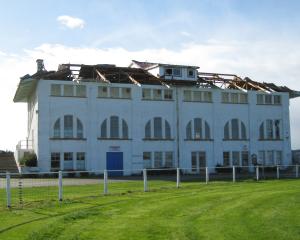The Department of Conservation accepts it could have acted sooner, possibly preventing the death of a tramper in the Fiordland National Park last year.
Coroner Marcus Elliott has found the death of French woman Anne-Marie Scaglione-Genet (53) may have been prevented if Doc had installed route markers before she fell to her death while walking the Gertrude Saddle, in January 2017.
Mr Elliott yesterday released his findings into the deaths of Israeli tourist Udy Brill (31) in 2016 and Mrs Scaglione-Genet.
Both were descending the saddle and had missed a crucial stream crossing, leading to their deaths.
After Mr Brill's death, a Doc investigation identified additional markers were required on the route.
But they were not installed by the time Mrs Scaglinoe-Genet her husband Pierre Genet walked the route on January 10.
She slipped and fell after the pair missed a safe spot where the route crossed a stream, Mr Elliott said.
Instead the couple walked into an area where the rocks were partially wet and Mrs Scaglione-Genet slipped and fell to her death.
Pole-mounted route markers and additional signage had been ordered by November 2016, but Doc was unable to install them by January 10, 2017. They have since been installed.
Mr Elliott said Doc should have installed the new markers after Mr Brill's death which may have prevented, Mrs Scaglione-Genet's fall.
A cautionary sign has also been installed at the head of the valley floor alerting trampers part of the route was unmarked.
Doc Te Anau operations manager Greg Lind said the department accepted the corner's findings and expressed its greatest sympathies to both families.
Installation of the markers before the end of November would have been extremely dangerous because of the risk to staff from avalanches but were no excuses for them not being installed before Christmas, Mr Lind said.
10 months earlier, Mr Brill died after he also missed the point in the stream where it was safe to cross.
He continued walking for some distance, eventually to the head of the waterfall where he found himself in extremely steep, challenging and dangerous terrain, which would have been wet and slippery, Mr Elliott said.
He had slipped on the rocks while either attempting to descend or attempting to climb back up after discovering he was in unsafe terrain.
Both trampers were experienced and well prepared for the tramp, Mr Elliott found.












